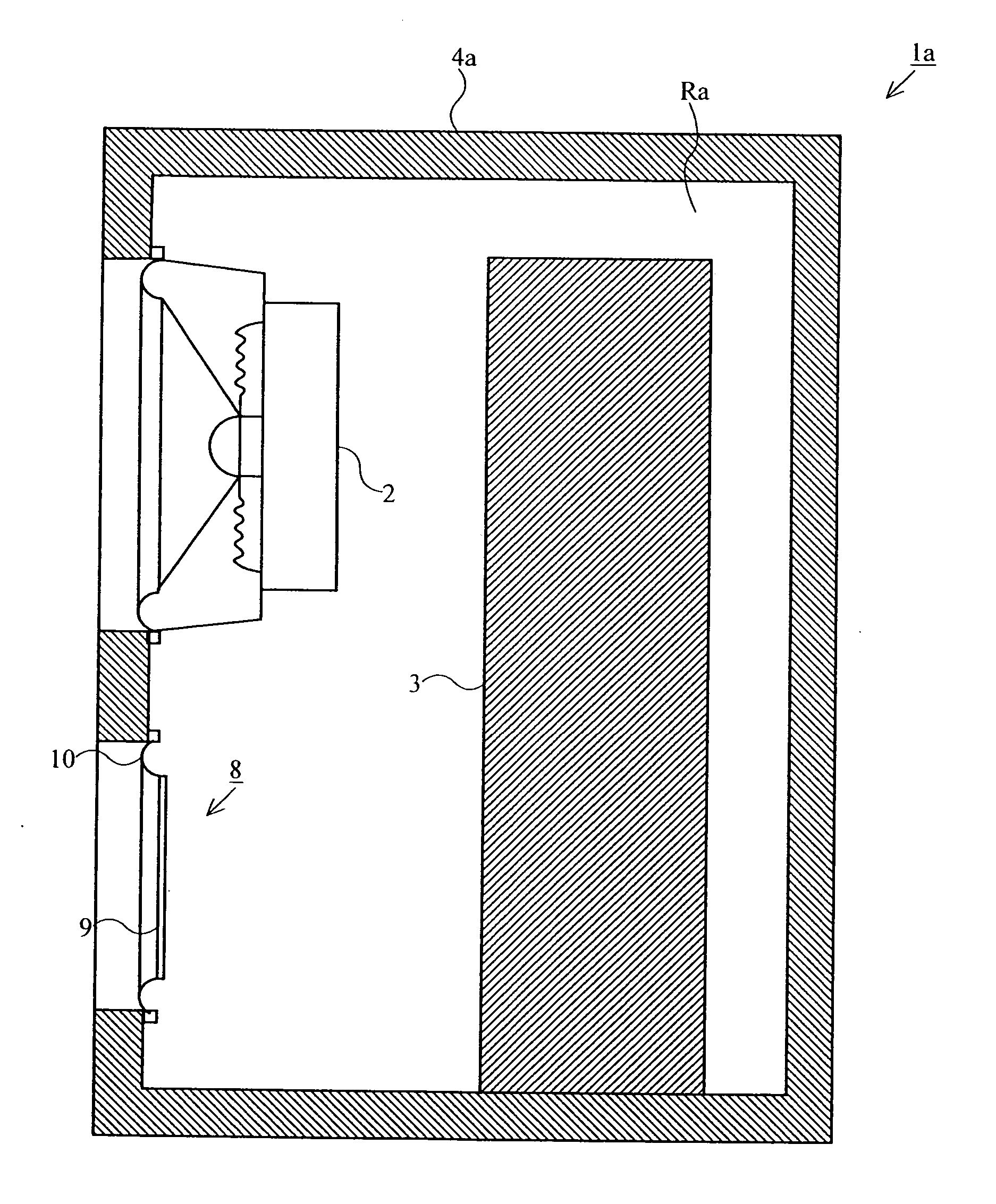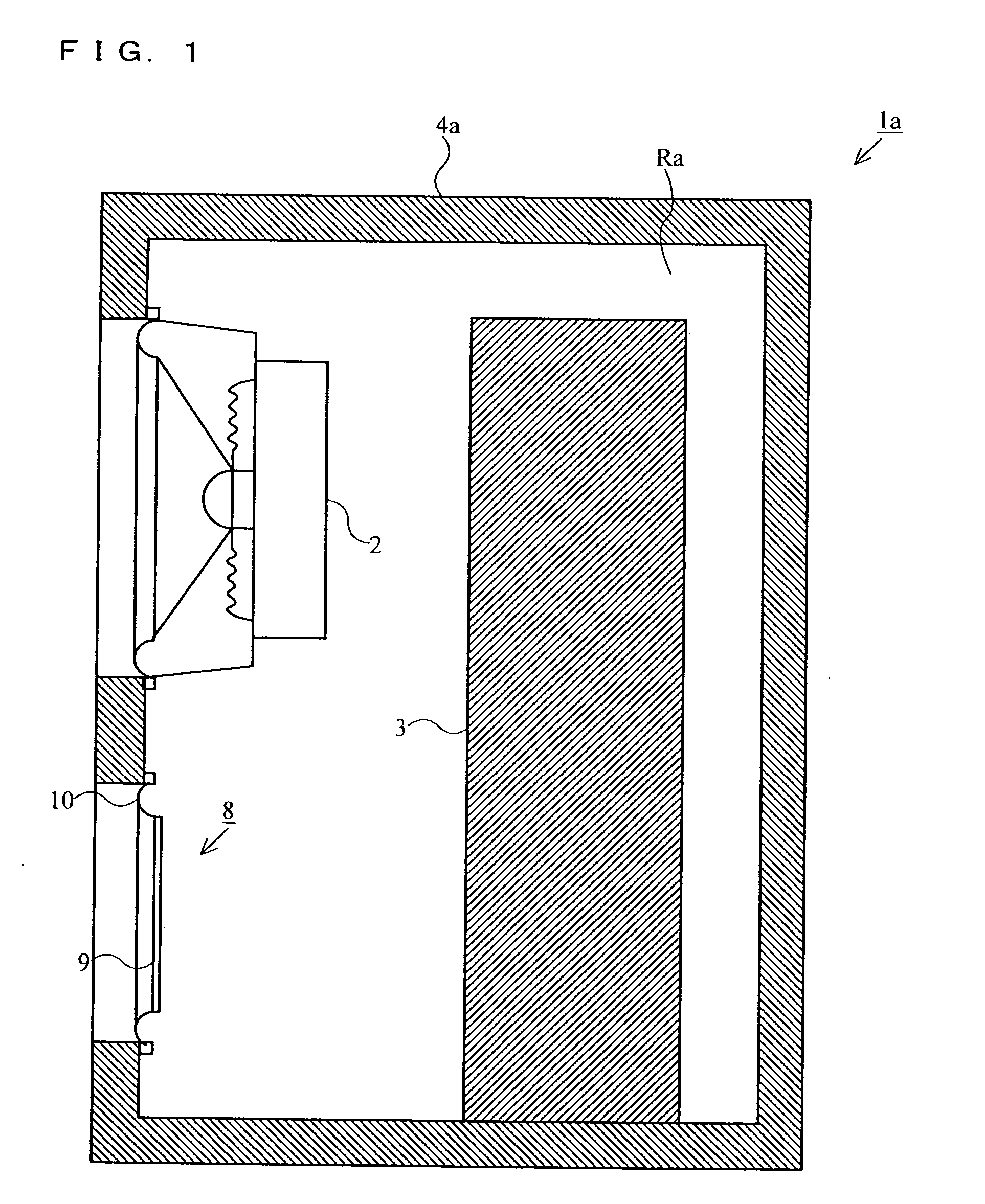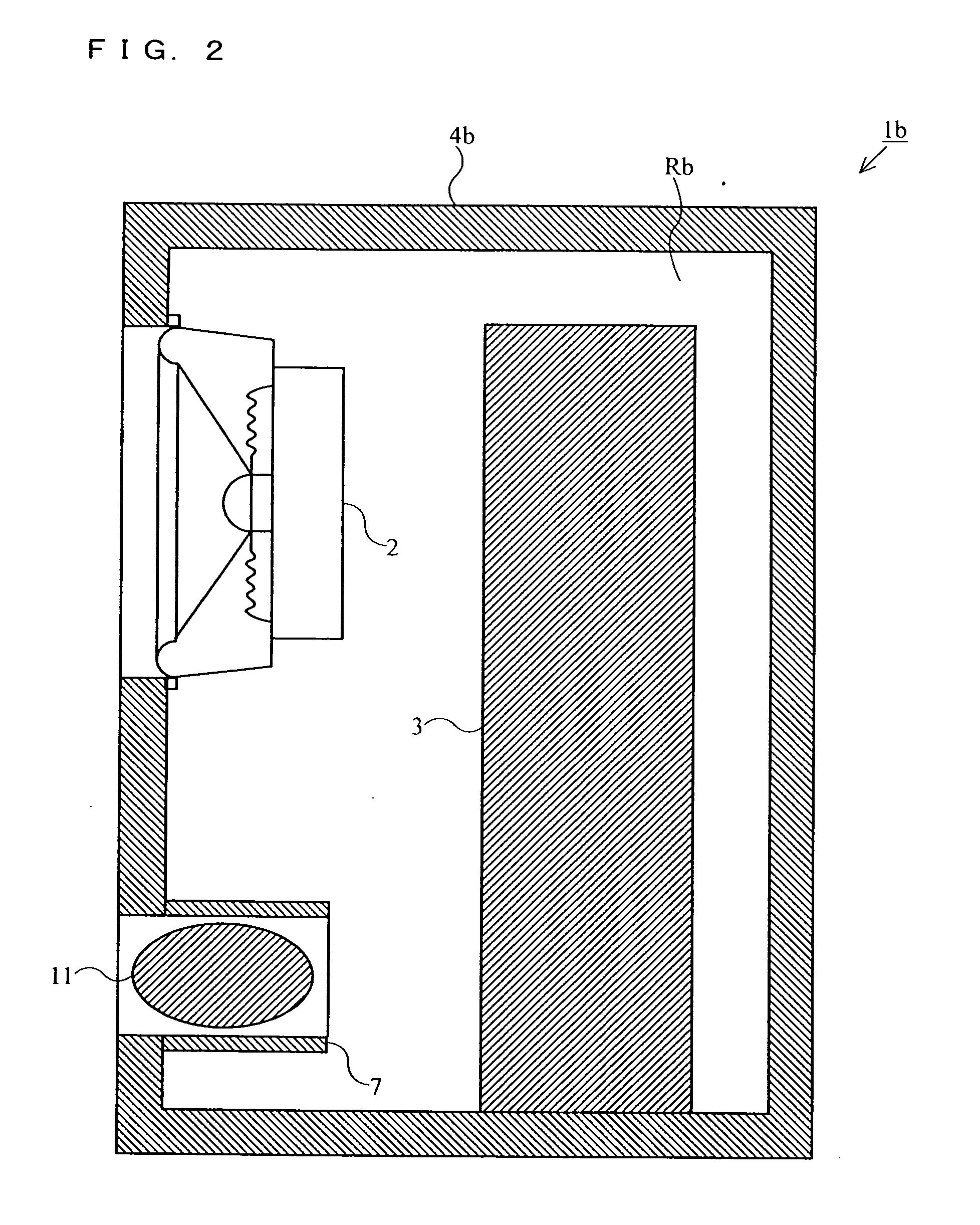Loudspeaker system
a speaker system and loudspeaker technology, applied in the direction of transducer details, electrical transducers, electrical apparatus, etc., can solve the problems of difficulty in realizing a speaker system capable of reproducing low frequency sound, and achieve the effects of low air permeability, easy moisture prevention, and large capacity
- Summary
- Abstract
- Description
- Claims
- Application Information
AI Technical Summary
Benefits of technology
Problems solved by technology
Method used
Image
Examples
first embodiment
[0045] With reference to FIG. 1, the loudspeaker system according to the first embodiment of the present invention will now be described. The loudspeaker system according to the first embodiment uses a passive radiator (drone cone) system as one example of the phase inversion mode. FIG. 1 is a cross sectional view which schematically shows the internal structure of the loudspeaker system 1a.
[0046] In FIG. 1, the loudspeaker system 1a comprises a loudspeaker unit 2, an absorbent 3, a cabinet 4a and a drone cone 8. The cabinet 4a forms the front surface, the back surface, the top surface, the bottom surface and the side surfaces of the right-hand side and the left-hand side of a housing of the loudspeaker system 1a. The loudspeaker unit 2 is an electrodynamic speaker and fitted to an opening of the front surface of the cabinet 4a. Inside the cabinet 4a, a hollow chamber Ra of the loudspeaker system 1a is created.
[0047] The absorbent 3 is disposed inside the hollow chamber Ra. The ab...
second embodiment
[0052] With reference to FIG. 2, the loudspeaker system according to the second embodiment of the present invention will now be described. The loudspeaker system according to the second embodiment uses a bass reflex-type loudspeaker system as one example of the phase inversion mode. FIG. 2 is a cross sectional view which schematically shows the internal structure of this loudspeaker system 1b.
[0053] In FIG. 2, the loudspeaker system 1b comprises a loudspeaker unit 2, an absorbent 3, a cabinet 4b, an acoustic port 7 and a damp proofing agent 11. The cabinet 4b forms the front surface, the back surface, the top surface, the bottom surface and the side surfaces of the right-hand side and the left-hand side of a housing of the loudspeaker system 1b. The loudspeaker unit 2 is an electrodynamic speaker and fitted to an opening of the front surface of the cabinet 4b. Inside the cabinet 4b, a hollow chamber Rb of the loudspeaker system 1b is created.
[0054] The absorbent 3 is disposed insi...
PUM
 Login to View More
Login to View More Abstract
Description
Claims
Application Information
 Login to View More
Login to View More - R&D
- Intellectual Property
- Life Sciences
- Materials
- Tech Scout
- Unparalleled Data Quality
- Higher Quality Content
- 60% Fewer Hallucinations
Browse by: Latest US Patents, China's latest patents, Technical Efficacy Thesaurus, Application Domain, Technology Topic, Popular Technical Reports.
© 2025 PatSnap. All rights reserved.Legal|Privacy policy|Modern Slavery Act Transparency Statement|Sitemap|About US| Contact US: help@patsnap.com



